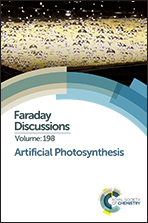Strategies to enhance the excitation energy-transfer efficiency in a light-harvesting system using the intra-molecular charge transfer character of carotenoids
Abstract
Fucoxanthin is a carotenoid that is mainly found in light-harvesting complexes from brown algae and diatoms. Due to the presence of a carbonyl group attached to polyene chains in polar environments, excitation produces an excited intra-molecular charge transfer. This intra-molecular charge transfer state plays a key role in the highly efficient (∼95%) energy-transfer from fucoxanthin to chlorophyll a in the light-harvesting complexes from brown algae. In purple bacterial light-harvesting systems the efficiency of excitation energy-transfer from carotenoids to bacteriochlorophylls depends on the extent of conjugation of the carotenoids. In this study we were successful, for the first time, in incorporating fucoxanthin into a light-harvesting complex 1 from the purple photosynthetic bacterium, Rhodospirillum rubrum G9+ (a carotenoidless strain). Femtosecond pump-probe spectroscopy was applied to this reconstituted light-harvesting complex in order to determine the efficiency of excitation energy-transfer from fucoxanthin to bacteriochlorophyll a when they are bound to the light-harvesting 1 apo-proteins.
- This article is part of the themed collection: Artificial Photosynthesis

 Please wait while we load your content...
Please wait while we load your content...